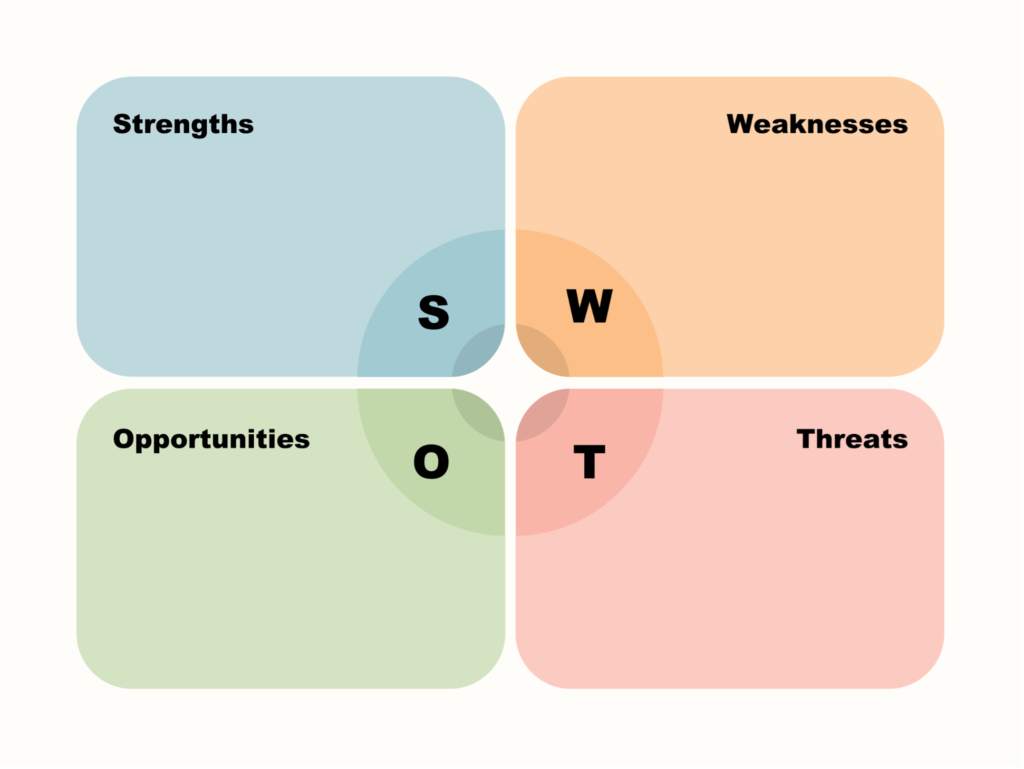
Thinking fast, thinking slow, thinking sideways — making decisions in the workplace can be like a game of chess, requiring strategy, agility, and a dash of foresight. From facing ethical dilemmas to choosing between marketing strategies, each decision shapes the path our career takes. That’s why mastering decision-making skills is crucial for navigating the professional landscape with finesse. And that’s where strategies for effective decision-making come into play.
These tools and approaches can help us navigate the turbulent waters of uncertainty with more confidence and clarity, enabling us to make informed and thoughtful choices. Let’s explore some of these strategies and how they can be applied in the context of the workplace to boost our effectiveness and professional success.
1) Gather relevant information
When faced with a decision in the workplace, it is crucial to gather all relevant information before proceeding.
This means collecting pertinent data, seeking feedback from colleagues and stakeholders, and fully understanding the context in which the decision will be made.
For example, when considering a new marketing strategy, it is essential to analyze market data, understand the needs and preferences of the target audience, and consider the company’s available resources. This you know, but sometimes we forget to do the “basics”.
Similarly, when dealing with human resources issues, if you are a leader in the company, for instance, it is important to listen to employees’ perspectives and understand the potential impacts of any decision on them and on the organizational culture as a whole.
Gathering relevant information not only helps make more informed decisions but also demonstrates a commitment to transparency and diligence in the decision-making process.
2) Evaluate your options

When evaluating your options, it’s like navigating a sea of opportunities. Each option is like an island, offering its own resources and challenges. It’s essential that before making a decision, you explore each island carefully. This means examining all available information about each option, and weighing the pros and cons of each.
For example, if you’re considering different marketing strategies to launch a new product, it’s important to analyze factors such as cost, effectiveness, target audience reach, and alignment with your brand’s values. You may also want to explore the success history of each strategy in similar contexts.
Similarly, when choosing between different suppliers or business partners, it’s crucial to consider aspects such as quality, reliability, cost-effectiveness, and customer support. You may want to request references, analyze contracts, and compare proposals before making a final decision.
Evaluating your options not only helps ensure that you make the best possible decision but also demonstrates a commitment to diligence and responsibility in business management. It’s like choosing the safest and most advantageous path through a dense forest — it may require time and effort, but the end result is an informed and successful decision.
3) Use the SWOT analysis technique

The SWOT analysis is a fundamental tool for guiding strategic decisions. It allows us to thoroughly examine all facets of a situation, providing a comprehensive view that can inform our choices.
By applying SWOT analysis to decision-making, you can clearly identify the strengths and weaknesses of each option. This may include internal resources such as team expertise or available financial resources, as well as external factors such as market trends or competition.
Additionally, SWOT analysis helps visualize the opportunities and threats associated with each option. By considering the external environment, you can identify emerging opportunities that can be leveraged and potential threats that need to be managed.
Let’s go back to the example of launching a new product. Here, you may identify established brand and experienced sales teams as strengths, while weaknesses may include limited marketing resources. Opportunities could be the growing demand for similar products, while threats may include competitors entering the market.
Now, let’s consider an example of SWOT analysis applied to a company considering expanding its product line to include a new category of products, such as sportswear:
Strengths:
- Recognized and established brand in the sports goods market.
- Talented and experienced design team.
- Well-established distribution channels and partnerships with renowned retailers.
- Ability to leverage the existing customer base to promote new products.
Weaknesses:
- Lack of previous experience in manufacturing and marketing sportswear.
- Limited production resources compared to established competitors.
- Potentially high initial production and distribution costs.
- Possible customer resistance to accepting the new product line due to lack of track record.
Opportunities:
- Growing demand for high-quality and stylish sportswear.
- Possibility to expand into new market segments, such as casual everyday fashion.
- Potential partnerships with athletes or celebrities to promote the new line.
- Potential to differentiate the brand and increase market share.
Threats:
- Intense competition from established brands in the sportswear market.
- Fluctuations in raw material and logistics costs.
- Risks associated with brand reputation if the new product line is not well received by the market.
- Possibility of fashion trend changes that may affect product demand.
Based on this SWOT analysis, the company can make an informed decision on whether to proceed with expanding its product line to include sportswear, carefully considering the strengths, weaknesses, opportunities, and threats associated with this decision.
4) Consult others

Consulting others is a valuable strategy when making important decisions in the business environment. By seeking the opinions of coworkers, mentors, or experts, you can gain valuable insights and different perspectives on the issue at hand. This can help you see the problem from new angles and identify solutions that may not have been initially considered.
Imagine you’re about to face a marketing challenge, such as deciding on the best brand positioning strategy; you could consult colleagues from different departments, such as sales, product development, or customer service. Each department may offer a unique perspective based on its experience and market knowledge.
Furthermore, seeking guidance from mentors or external experts can provide an impartial and objective view of the problem. They can share their experiences and offer advice based on similar situations they have encountered in the past.
When consulting others, it’s important to keep an open mind and be willing to consider different viewpoints. This can help you make a more informed and well-grounded decision that takes into account a variety of perspectives and insights.
5) Consider the consequences
You’ve conducted your SWOT analysis and asked some colleagues at work for their opinion on your decision. Now, in my view, it’s time to analyze and ponder your actions.
Weighing the consequences is a crucial step in the decision-making process. Before making a final decision, it’s important to consider not only the immediate outcomes but also the long-term impacts on yourself, your team, and your organization.
Assessing what will be affected involves not only short-term metrics like sales and leads but also brand reputation, customer satisfaction, and organizational culture. Additionally, it’s important to consider how the decision may impact other areas of the company, such as operations, finance, and human resources.
It’s important to remember that decision-making is not always easy, and there may be uncertainty and risk involved. However, by carefully weighing the consequences and considering a variety of factors, you can increase your chances of making an informed and well-thought-out decision.
When pondering the consequences, it’s helpful to conduct a risk analysis to identify potential scenarios and their likelihood of occurrence. This can help you assess the risks associated with each option and take steps to mitigate them if necessary.
6) Trust your intuition
After acting upon all these tips I’ve shared, if you’re still uncertain about which path to follow, well, the answer is simple: Trust your intuition.
Confidence in your intuition is a valuable skill in the world of business and particularly in marketing. While it’s important to carefully analyze options and consider available data, it’s also crucial to trust your intuition. Here are some reasons why trusting your intuition can be an advantage:
- Pattern recognition: Your intuition is often based on your experience and accumulated knowledge over time. This can help you recognize patterns and trends that may not be immediately obvious when analyzing data
- Quick response to unexpected situations: In a dynamic business environment, there may be times when you need to make quick decisions based on limited information. Trusting your intuition can help you act swiftly and confidently in unexpected situations.
- Future guidance: Your intuition can provide insights into what may happen in the future based on your current understanding of the market, industry trends, and consumer behavior. This can help you anticipate and prepare for future changes and challenges.
However, remember that trusting your intuition doesn’t mean completely disregarding data and analysis. Instead, it’s about balancing rational analysis with confidence in your instincts. By doing so, you can make more informed decisions and increase your chances of success in the business and marketing world.
7) Act with confidence

To conclude, your next decision-making process will be with great confidence!
Acting with confidence conveys credibility to your coworkers, clients, and business partners. When you demonstrate confidence in your decisions, others are more likely to trust you and follow your lead.
Furthermore, acting with confidence generates positive energy around you. This can motivate you and your team to strive towards achieving the set goals. A confident attitude can also inspire others to act confidently in their own responsibilities.
Don’t forget, that you’re demonstrating a resilient mindset. This means you’re ready to face challenges and overcome obstacles that may arise along the way. A resilient attitude is essential for dealing with the uncertainties and constant changes in the business world.
Therefore, after making a decision, it’s important to act with confidence and fully commit to it. Remember that confidence is contagious and can inspire others around you to act confidently as well.
Conclusion
Making decisions in the workplace can be challenging, but mastering effective strategies can make all the difference. Not every decision will be perfect, and that’s okay. The important thing is to learn from each experience and adjust your approach as necessary in the future.
By implementing these decision-making strategies, you will be better equipped to face the challenges of the workplace and achieve success in your career. So, trust yourself, trust your process, and move forward with confidence!
Now, tell me, how do you weigh your decisions in the workplace? Do you have any specific strategy for these actions?
Feel free to give me feedback and also share your stories with me. I’ll be very happy to receive your message.
Don’t forget to subscribe to my newsletter on Medium to receive exclusive content on performance, paid media, productivity, creativity, marketing as a whole, and some geeky stuff.
Thank you for reading this far. See you next time!




